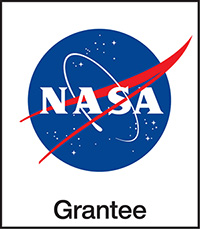2. The Blue Planet: Water on Earth
Learners explore the different reservoirs of water on Earth.
Setup: Prep Time 10 min.
- You will need access to a sink
- Prepare cups of water.
*See Materials & Preparation in the Educator Guide linked above for full info.
Context-Setting Video
Why Does NASA Want to Explore Jupiter’s Ocean Moon?
21st Century Skills
- Critical Thinking
Science Practices
- Asking Questions and Defining Problems
Learners Will Do
- Explore the different reservoirs of water on Earth.
Learners Will Know
- Water is a limited natural resource that can be found in different forms.
Connecting Across Activities
- Activity 1: Sharing Experiences: Last time, learners shared experiences with, and stories about, water.
- Activity 2: Water on Earth: Today, learners explore the different reservoirs of water on Earth.
- Activity 3: Water Habitability: Next time, learners will explore how different living things need liquid water to survive.
NASA Eyes on the Solar System app
Use the online interactive Eyes on the Solar System.
As needed, consider ways of demonstrating the scale of the Solar System in other modalities, such as the tactile NISE’s Exploring the Solar System: Pocket Solar System and auditory Solar System in Sound.
Are There Oceans on Other Worlds? We Asked a NASA Expert (0:00 to 1:00)
Why Does NASA Want to Explore Jupiter’s Ocean Moon? (0:00 to 1:07)
If you cannot show the videos, tell learners that NASA is sending a spacecraft to Europa, one of the moons of Jupiter. Europa is a bit smaller than Earth’s Moon, but its surface is covered in ice instead of rock. Scientists think there is a giant ocean underneath the ice. There may be vents that warm up parts of this ocean and create the conditions for life. NASA wants to figure out if places like Europa could support life. Find out more here: Meet Europa Clipper.
To help learners understand what they will be doing during this activity, play the translatable video Water Where We Are From Instructional Read Aloud.





